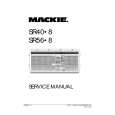|
|
|
Who's Online
There currently are 5910 guests online. |
|
Categories
|
|
Information
|
|
Featured Product
|
|
|
 |
|
|
There are currently no product reviews.
 ;
Great service. Manual is as advertised and delivered when promised.
 ;
Perfect quality, highly appreciated service !!!
Fast delivery of the download info, no issues at all. Recommended E-manual shop !!!
 ;
hi owners manual- crew,
i am very satisfied about the trade with you.
if i need some other manuals, i will contact you again.
thanks
frank kappler
 ;
Full Panasonic service Manual, as described, no problems
 ;
This place is amazing. Got our manual in a few hours. Print quality is excellent. Even the manufacturer didn't have this manual. The price was excellent. How many more stars can I give them? More than satisfied.
PRE FDR/POST EQ (AUX SENDS 5�8) Point Before: Fader (switch up), EQ IN (switch down). Point After: AUX sends 5�8 . This switch has one difference from the PRE switch for AUX sends 1�4: In the PRE mode (named POST EQ), the tap point is still before the Channel Fader, but after the EQ, instead of before. If you prefer that your stage monitor mixes have EQ, use these AUX sends with this switch down. If you prefer no EQ, use AUX sends 1�4 with the PRE switch down.
Main Aux Returns (A1�A4) Top to bottom: High Shelving, High-Mid Peaking, LowMid Peaking, Low Shelving, High Pass Filter.
+15 +10 +5
MAIN AUX RETURNS (A1�A4)
You�ve no doubt noticed that the MAIN AUX RETURNS (A1�A4) look suspiciously like the Channels. That�s because they are Channels, but they�re stereo instead of mono, with full routing to the LEFT/RIGHT/CENTER and Subgroup mixes, AUX sends and SOLO. we�ll just cover the things that are different. TRIM The only difference between the Channel TRIM and this one is the gain range (and the fact that this one is stereo). With the control fully down there will be 10dB of attenuation. With the control fully up, 10dB of boost. Perform the Level-Setting Procedure every time you patch in a new sound source to these stereo Channels, to assure maximum headroom and minimum noise. HPF
O O
U
TRIM
A4
-10
+10
U
AUX 1
O O
U
+15
2
U
+15
3
O O
+15
U
4
O O
+15 PRE
U
A4
0
�5 �10 �15 20Hz
5
O O
+15
U
100Hz
1kHz
10kHz 20kHz
6
+15 +10 +5
0
�5 �10 �15 20Hz 100Hz 1kHz 10kHz 20kHz
This operates the same way as it does on the Channels � engage the switch to activate the HPF (high pass filter). The difference is that the frequency is not adjustable � it�s preset at 150Hz, with a 18dB per octave curve. We recommend that you leave the HPF engaged at all times unless the signal has important ultra-low-frequency content that would be diminished by using a 150Hz HPF. However, these stereo Channels are designed to handle
O O
+15
U
7
O O
+15
U
8
O O
+15
PRE FDR POST EQ
U
EQ
12k
HI
-15
+15
U
+15 +10 +5
AUX return signals, and those signals rarely have this ultra-low-frequency content. EQ The MAIN AUX RETURNS (A1�A4) have 4-band EQ, but the two midrange bands do not have frequency sweep controls. The frequencies are fixed at 12kHz (HI shelving),
100Hz 1kHz 10kHz 20kHz
-15
HI MID
U
+15
3k
0
�5 �10 �15 20Hz
800Hz -15
U
LOW MID
+15
LOW
80Hz -15 +15
+15 +10 +5
0
�5 �10 �15 20Hz 100Hz 1kHz 10kHz 20kHz
3kHz (HI-MID bandpass), 800Hz (LOW-MID bandpass), and 80Hz (LOW shelving). Using HPF with EQ allows you to boost the LOW EQ without boosting the subsonic debris, cleaning up your mix and conserving amplifier power. We highly recommend its use.
EQ IN
LOW CUT 150 Hz 18dB/OCT
+15 +10 +5
0
�5 �10 �15 20Hz 100Hz 1kHz 10kHz 20kHz
27
 $4.99 SR568 MACKIE
Service Manual Complete service manual in digital format (PDF File). Service manuals usually contains circuit diagr…
|
|
 |
> |
|
